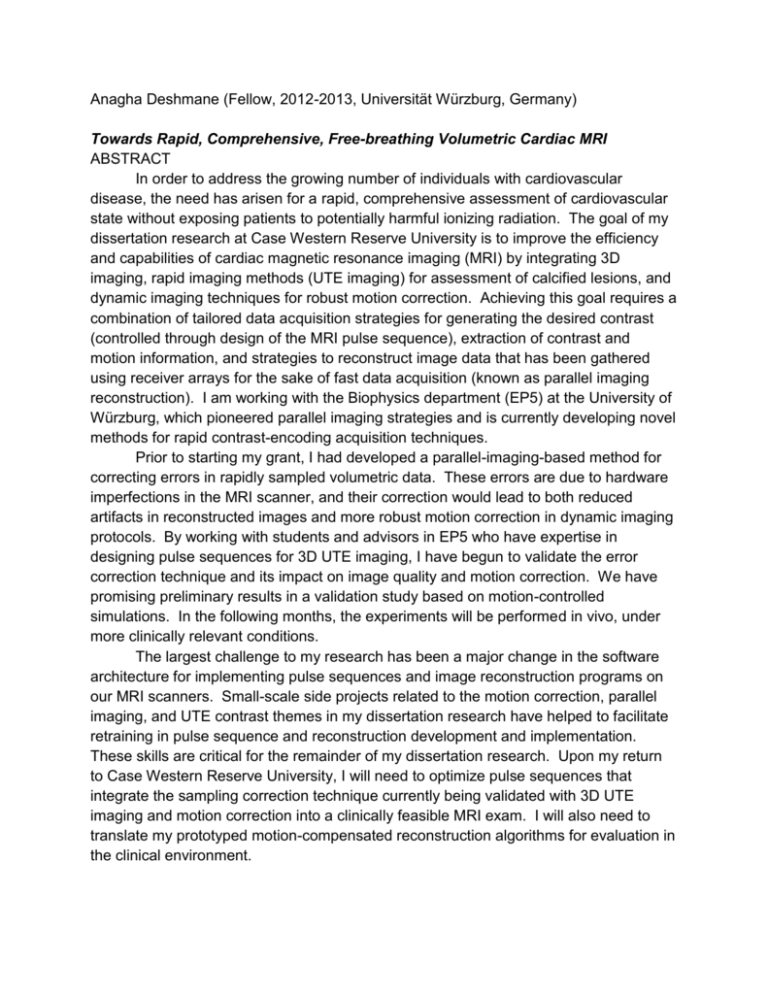ABSTRACT_Deshmane
advertisement

Anagha Deshmane (Fellow, 2012-2013, Universität Würzburg, Germany) Towards Rapid, Comprehensive, Free-breathing Volumetric Cardiac MRI ABSTRACT In order to address the growing number of individuals with cardiovascular disease, the need has arisen for a rapid, comprehensive assessment of cardiovascular state without exposing patients to potentially harmful ionizing radiation. The goal of my dissertation research at Case Western Reserve University is to improve the efficiency and capabilities of cardiac magnetic resonance imaging (MRI) by integrating 3D imaging, rapid imaging methods (UTE imaging) for assessment of calcified lesions, and dynamic imaging techniques for robust motion correction. Achieving this goal requires a combination of tailored data acquisition strategies for generating the desired contrast (controlled through design of the MRI pulse sequence), extraction of contrast and motion information, and strategies to reconstruct image data that has been gathered using receiver arrays for the sake of fast data acquisition (known as parallel imaging reconstruction). I am working with the Biophysics department (EP5) at the University of Würzburg, which pioneered parallel imaging strategies and is currently developing novel methods for rapid contrast-encoding acquisition techniques. Prior to starting my grant, I had developed a parallel-imaging-based method for correcting errors in rapidly sampled volumetric data. These errors are due to hardware imperfections in the MRI scanner, and their correction would lead to both reduced artifacts in reconstructed images and more robust motion correction in dynamic imaging protocols. By working with students and advisors in EP5 who have expertise in designing pulse sequences for 3D UTE imaging, I have begun to validate the error correction technique and its impact on image quality and motion correction. We have promising preliminary results in a validation study based on motion-controlled simulations. In the following months, the experiments will be performed in vivo, under more clinically relevant conditions. The largest challenge to my research has been a major change in the software architecture for implementing pulse sequences and image reconstruction programs on our MRI scanners. Small-scale side projects related to the motion correction, parallel imaging, and UTE contrast themes in my dissertation research have helped to facilitate retraining in pulse sequence and reconstruction development and implementation. These skills are critical for the remainder of my dissertation research. Upon my return to Case Western Reserve University, I will need to optimize pulse sequences that integrate the sampling correction technique currently being validated with 3D UTE imaging and motion correction into a clinically feasible MRI exam. I will also need to translate my prototyped motion-compensated reconstruction algorithms for evaluation in the clinical environment.





